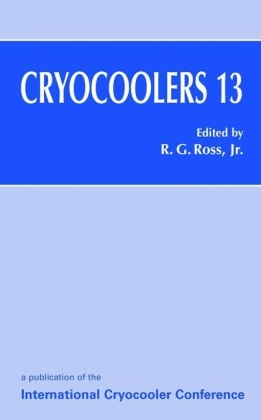Read more
This is the 13th volume in the conference series. Over the years the International Cryocoolers Conference has become the preeminent worldwide conference for the presentation of the latest developments and test experiences with cryocoolers. The typical applications of this technology include cooling space and terrestrial infrared focal plane arrays, space x-ray detectors, medical applications, and a growing number of high-temperature super-capacitor applications.
List of contents
Space Cryocoolers for 4-18 K Applications 20 to 80 K Long-life Stirling Cryocoolers Space Pulse Tube Cryocooler Developments Commercial and Industrial Pulse Tube Cryocoolers.- Thermoacoustically-Driven Pulse Tube Cryocoolers Linear Compressor Development and Modeling Pulse Tube Analysis and Experimental Measurements.- Regenerator Materials Development and Testing.- Regenerator Modeling and Performance Investigations.- Sorption Cryocooler Developments.- Sub-Kelvin, Magnetic, and Optical Refrigerators.- Cryocooler Integration Technologies.- Space Cryocooler Applications.- Commercial Cryocooler Applications.- Indexes.
Summary
The last two years have witnessed a continuation in the breakthrough shift toward pulse tube cryocoolers for long-life, high-reliability cryocooler applications. New this year are papers de scribing the development of very large pulse tube cryocoolers to provide up to 1500 watts of cooling for industrial applications such as cooling the superconducting magnets of Mag-lev trains, coolmg superconducting cables for the power mdustry, and liquefymg natural gas. Pulse tube coolers can be driven by several competing compressor technologies. One class of pulse tube coolers is referred to as "Stirling type" because they are based on the linear Oxford Stirling-cooler type compressor; these generally provide coolmg m the 30 to 100 K temperature range and operate ^t frequencies from 30 to 60 Hz. A second type of pulse tube cooler is the so-called "Gifford-McMahon type. " Pulse tube coolers of this type use a G-M type compressor and lower frequency operation (~1 Hz) to achieve temperatures in the 2 to 10 K temperature range. The third type of pulse tube cooler is driven by a thermoacoustic oscillator, a heat engine that functions well in remote environments where electricity is not readily available. All three types are described, and in total, nearly half of this proceedings covers new developments in the pulse tube arena. Complementing the work on low-temperature pulse tube and Gifford-McMahon cryocoolers is substantial continued progress on rare earth regenerator materials.

